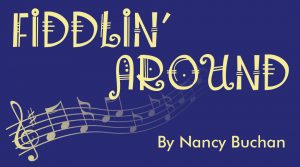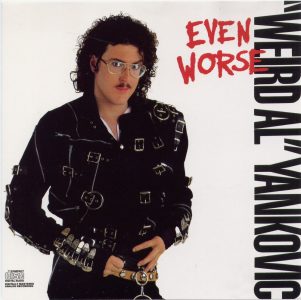Songwriting
 Music lovers and certainly most musicians, whether they are singers or sidemen or drummers, love and value our songwriters. I give them all respect and thank them for educating us and for telling our stories and history. And for giving me something to play along to… They enunciate the dreams and hopes and fears and sorrows and happiness we all go through, and they help us realize we are not alone in those feelings. It’s impossible to say where the first snippet of a melody came from—maybe it was inspired by a lone and anonymous bird singing away up in a tree. Or from a chorus of frogs croaking after a rain, or the sound of coyotes talking to each other over a valley. When you put that most personal of instruments, the human voice, on top of a melody—you’ve got a song.
Music lovers and certainly most musicians, whether they are singers or sidemen or drummers, love and value our songwriters. I give them all respect and thank them for educating us and for telling our stories and history. And for giving me something to play along to… They enunciate the dreams and hopes and fears and sorrows and happiness we all go through, and they help us realize we are not alone in those feelings. It’s impossible to say where the first snippet of a melody came from—maybe it was inspired by a lone and anonymous bird singing away up in a tree. Or from a chorus of frogs croaking after a rain, or the sound of coyotes talking to each other over a valley. When you put that most personal of instruments, the human voice, on top of a melody—you’ve got a song.

Human history is full of songs—mothers soothe their children to them, sailors learn navigation and coordinate their shipboard duties by singing sea shanties, kings hired songwriters to brag about their triumphs for them, slaves sang of their roots, field workers used songs to keep their rhythm consistent. There are way too many styles and purposes of songwriting to talk about all of them here, but you’ll find similarities and common approaches within each style. Religions throughout time have used songs to praise and acknowledge a higher being, whether it was with a Gregorian chant or a church full of folks singing spirituals. They help us feel a sense of community and shared purpose. And singing along with others is proven to be good for your health and mental well-being!
It may not be necessary, but it sure won’t hurt for an aspiring songwriter to acquire the basic skills of writing and some basic music theory. First off, you have to come up with something worth writing about or a story worth telling. Or some kind of really catchy hook either musically or lyrically. Then comes either the lyrics or a melody line—sometimes both at the same time, sometimes not. Learning about harmony, notation, rhythm and counterpoint is helpful. Studying literature, poetry or drama gives the lyricist access to simile, metaphor and imagery. Understanding rhythmic options can lead a writer down interesting paths. Singing and listening to yourself and to others lets one know what works for the voice and what doesn’t. All songs have form or construction, for without it the creator’s effort would be sprawling and confusing. The tough part is exposing your creation to the public, ‘cause if it doesn’t work for the audience, you have go back to the writing board. And sometimes you just can’t tell if a song works because of the singer or the song—after all, Aretha Franklin can make a childish ditty sound great!
Modern popular music is way different from most classical music in that modern songs need to impress us in the first 20 seconds or so, and the song might only be a total of a few minutes long. A measure, or bar, is the section of time determined by the time signature at the beginning of the song. For example, 3/4 time means 3 beats to the measure, 4/4 time means 4 beats to the measure, etc. Say a song is a total of 80 measures. Within those 80 measures there might be 3 or 4 different sections that are repeated throughout the song, and for convenience sake these sections might be labeled alphabetically. Musicians all understand when someone describes a form as AABA, or ABCA, or ABAB or whatever. Of course many compositions don’t follow this blueprint, but most contemporary songs tell the story in the verses, which usually have a similar meter or cadence and or they rhyme in some way. Then there’s the bridge or chorus section which is most often where the ’hook’ is, lyrically or melodically, so it gets repeated during the song.
A blues song might have, for example, 3 lines in a verse and typically the first line would be repeated in the 2nd line, with a 3rd line resolving the pattern. (Ashes to ashes and dust to dust/ Ashes to ashes and dust to dust/ If the whiskey don’t get you then the cocaine must.) Folksongs, which have their roots with the unschooled common folks, often repeat lines and sometimes totally lack any rhymes. (Oh my darlin’, oh my darlin’, oh my darlin’ Clementine/ Thou art lost but not forgotten/ Dreadful sorry, Clementine). American spirituals were mostly inspired by the displaced Africans and their history and access to Bible stories, and often involved leader/chorus call and response lyrics. (I looked over Jordan and what did I see/Comin’ for to carry me home/a band of angels comin’ after me/Comin’ for to carry me home).
Country lyrics get bashed for being simple, but frankly simplicity works, and is the most important lesson for songwriters and singers and instrumentalists to learn, and the hardest to make yourself stick to. You just gotta back away from that too many words or too many notes temptation. Hank Williams said “If a song can’t be written in 20 minutes, it ain’t worth writing.” I think it was Willie Nelson who said “A good country song is nothin’ but 3 chords and the truth.” Insight doesn’t need to be complicated. Which brings me to rock and roll. Sure, it can soar up there with Beethoven and Shakespeare, but mainly it’s about sex, drugs and yep, rock and roll. Keep it simple.
 One book I read about songwriting said a good way to start is to write parodies of existing songs. Shoot, Weird Al Yankovich turned that skill into a lifetime career. But it is a good way to get inside of the song and understand its mechanics while giving the lyrics your own personal update. Songwriters are all different—some start with a lyric they like, some with a melody. Others establish a rhythm first or go for imagery instead of specific lyrical content. Some just find a title they like and go from there. John Prine claims he just wants to write some honest songs and that he has never had any discipline about doing it. Some songwriters work at it every day, approaching it like a job and obsessing over details. Keith Richards said “I don’t think rock and roll songwriters should worry about art. As far as I’m concerned, Art is just short for Arthur.” Lenny Kravitz thinks most folks don’t really listen to the lyrics, only the chorus, if that. Lots of songwriters feel their job is to entertain, not to preach or show any private opinions. I figure since God gave me a microphone (ok fine I brought my own to the show…) I get to expound on what I think are truths.
One book I read about songwriting said a good way to start is to write parodies of existing songs. Shoot, Weird Al Yankovich turned that skill into a lifetime career. But it is a good way to get inside of the song and understand its mechanics while giving the lyrics your own personal update. Songwriters are all different—some start with a lyric they like, some with a melody. Others establish a rhythm first or go for imagery instead of specific lyrical content. Some just find a title they like and go from there. John Prine claims he just wants to write some honest songs and that he has never had any discipline about doing it. Some songwriters work at it every day, approaching it like a job and obsessing over details. Keith Richards said “I don’t think rock and roll songwriters should worry about art. As far as I’m concerned, Art is just short for Arthur.” Lenny Kravitz thinks most folks don’t really listen to the lyrics, only the chorus, if that. Lots of songwriters feel their job is to entertain, not to preach or show any private opinions. I figure since God gave me a microphone (ok fine I brought my own to the show…) I get to expound on what I think are truths.
Please get out and listen to our pretty diverse bunch of songwriters and players around here! Next month I will be picking the brains of some of our local bards—like the G String Cowboys, who just put out a great cd of original music. Like Ralph Simms, who has written beautiful, well-crafted money making hits. Like Ben Orton, who writes everything from funny songs to cosmic, thought provoking pieces. Check around Quepos and Dominical and Uvita to see where we are all playing and come have some home-spun fun with us!
To be a musician, especially a singer/songwriter—well, you don’t do that if you have a thriving social life. James Taylor
Imagination is the key to my lyrics. The rest is painted with a little science fiction… Jimi Hendrix
I don’t believe that songwriting has to be profound, but I truly believe it’s a crime for you to go outta the way for it not to be. Steve Earle
